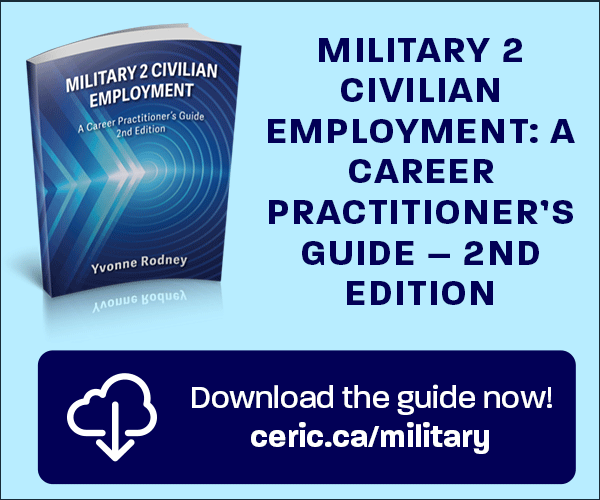Career Development of First-Year University Students: A Test of Astin’s Career Development Model
Keywords:
career development, university student, first-year, Astin, modelAbstract
This study examined how the four constructs in Astin’s (1984) career development model operate in the choice of college major career goals with a selected sample of 253 first-year university students. The results of 2x2 MANOVAs indicated significant gender and language differences on some of Astin’s four factors. The results of Pearson product-moment correlations indicated that the four factors in Astin’s model operate quite differently for students whose language of origin is not English. The results are discussed in terms of the developmental and cultural issues these students were facing. Implications for future research and interventions are also discussed.
References
Astin, H. S. (1984). The meaning of work in women’s lives: A sociopsychological model of career choice and work behavior. The Counseling Psychologist, 12, 117- 126.
Axelson, J. A. (1993). Work and career development. In J. A. Axelson, Counseling and development in a multicultural society (2nd ed., pp. 224-268). Pacific Grove, CA:
Brooks/Cole.
Bandura, A. (1977). Social learning theory. Englewood Cliffs, NJ: Prentice-Hall.
Bandura, A. (1978). The self system in reciprocal determinism. American Psychologist, 33, 344-358.
Betz, N. E. (1991). Twenty years of vocational research: Looking back and ahead. Journal of Vocational Behavior, 39, 305-310.
Betz, N. E., & Fitzgerald, L. F. (1987). The career psychology of women. Orlando, FL: Academic Press.
Bishop, J. B. (1990). The university counseling center: An agenda for the 1990s. Journal of Counseling and Development, 68, 408-413.
Brooks, L. (1990). Recent developments in theory building. In D. Brown & L. Brooks (Eds.), Career choice and development (2nd ed., pp. 364-394). San Francisco: Jossey- Bass.
Chiu, L. H. (1990). Comparison of responses to Edwards Personal Preference Schedule by Chinese and American college students. Psychological Reports, 67(3, Pt. 2),
-1298.
Coleman, V. D., & Barker, S. A. (1992). A model of career development for a multicultural work force. International Journal for the Advancement of Counseling, 15,
-195.
Engels, D. W., Minor, C. W., Sampson, J. P., Jr., & Splete, H. H. (1995). Career counseling specialty: History, development, and prospect. Journal of Counseling and Development, 74, 134-138.
Farmer, H. S. (1985). Model of career and achievement motivation for men and women. Journal of Counseling Psychology, 32, 353- 390.
Fitzgerald, L. F., & Crites, J. O. (1980). Toward a career psychology of women: What do we know? What do we need to know? Journal of Counseling Psychology, 27, 44-62.
Fouad, N. A., & Arbona, C. (1994). Careers in a cultural context. The Career Development Quarterly, 43, 96-112.
Gilbert, L. A. (1984). Comments on the meaning of work in women’s lives. The Counseling Psychologist, 12, 129-130.
Gottfredson, L. S. (1981). Circumscription and compromise: A developmental theory of career aspiration. Journal of Counseling Psychology, 28, 416-427.
Griffith, A. R. (1980). A survey of career development in corporations. Personnel and Guidance Journal, 58, 537-543.
Hackett, G., & Betz, N. (1981). A selfefficacy approach to the career development of women. Journal of Vocational Behavior, 18, 326-339.
Harmon, L. W. (1984). What’s new? A response to Astin. The Counseling Psychologist, 12, 127-128.
Harter, S. (1988). Developmental processes in the construction of the self. In T. D. Yawkey & J. E. Johnson (Eds.), Integrative processes and socialization: Early
to middle childhood (pp. 45-78). Hillsdale, NJ: Lawrence Erlbaum Associates.
Holland, J. (1966). The psychology of vocational choice: A theory of vocational personalities and work environments. Waltham, MA: Blaisdell.
Holland, J. (1985). Making vocational choices: A theory of vocational personalities and work environments. Englewood Cliffs, NJ: Prentice-Hall.
Ihle, G. M., Sodowsky, G. R., & Kwan, K. L. (1996). Worldviews of women: Comparisons between white American clients, white American counselors, and Chinese
international students. Journal of Counseling and Development, 74, 300-306.
Murrell, A. J., Frieze, I. H., & Frost, J. L. (1991). Aspiring to careers in male- and female-dominated professions: A study of black and white college women. Psychology
of Women Quarterly, 15, 103-126.
Okocha, A. A. G. (1994). Preparing racial ethnic minorities for the work force 2000. Journal of Multicultural Counseling and Development, 22, 106-114.
Parsons, F. (1909). Choosing a vocation. Boston: Houghton Mifflin.
Perun, P. J., & Bielby, D. D. V. (1981). Towards a model of female occupational behavior: A human development approach. Psychology of Women Quarterly, 6, 234-252.
Poole, M. E., Langan-Fox, J., Ciavarella, M., & Omodei, M. (1991). A contextualist model of professional attainment: Results of a longitudinal study of career paths
of men and women. The Counseling Psychologist, 19, 603- 624.
Roe, A. (1956). The psychology of occupations. New York: Wiley.
Scott, J., & Hatalla, J. (1990). The influence of chance and contingency factors on career patterns of college-educated women. Career Development Quarterly, 39, 18-30.
Shaughnessy, J. J., & Zechmeister, E. B. (1994). Research methods in psychology (3rd ed.). New York: McGraw-Hill.
Smith, E. J. (1983). Issues in racial minorities’ career behavior. In W. B. Walsh & S. H. Osipow (Eds.), Handbook of vocational psychology. Vol. 1. Foundations (pp. 161-
. Hillsdale, NJ: Erlbaum.
Super, D. E. (1951). Vocational adjustment: Implementing a self-concept. Occupations, 30, 88-92.
Super, D. E. (1953). A theory of vocational development. American Psychologist, 8, 185-190.
Super, D. E. (1963). Self-concepts in vocational development. In D. E. Super (Ed.), Career development: Self-Concept theory (pp. 1-16). New York: College Entrance
Examination Board.
Tsang, W. K. (1993). Educational and early socioeconomic status attainment in Hong Kong. Hong Kong: The Chinese University of Hong Kong, Hong Kong Institute of
Asia-Pacific Studies.
U. S. Equal Employment Opportunity Commission. (1991). 1990 report: Job patterns for minorities and women in private industry. Washington, DC: U. S. Government Printing Office.
Valsiner, J. (1989). Human development and culture. Massachusetts: Lexington Books.
Wang, T. H., & Creedon, C. F. (1989). Sex role orientations, attributions for achievement, and personal goals of Chinese youth. Sex Roles, 20(9-10), 473-486.

Downloads
Published
How to Cite
Issue
Section
License

This work is licensed under a Creative Commons Attribution-NonCommercial-NoDerivatives 4.0 International License.
















